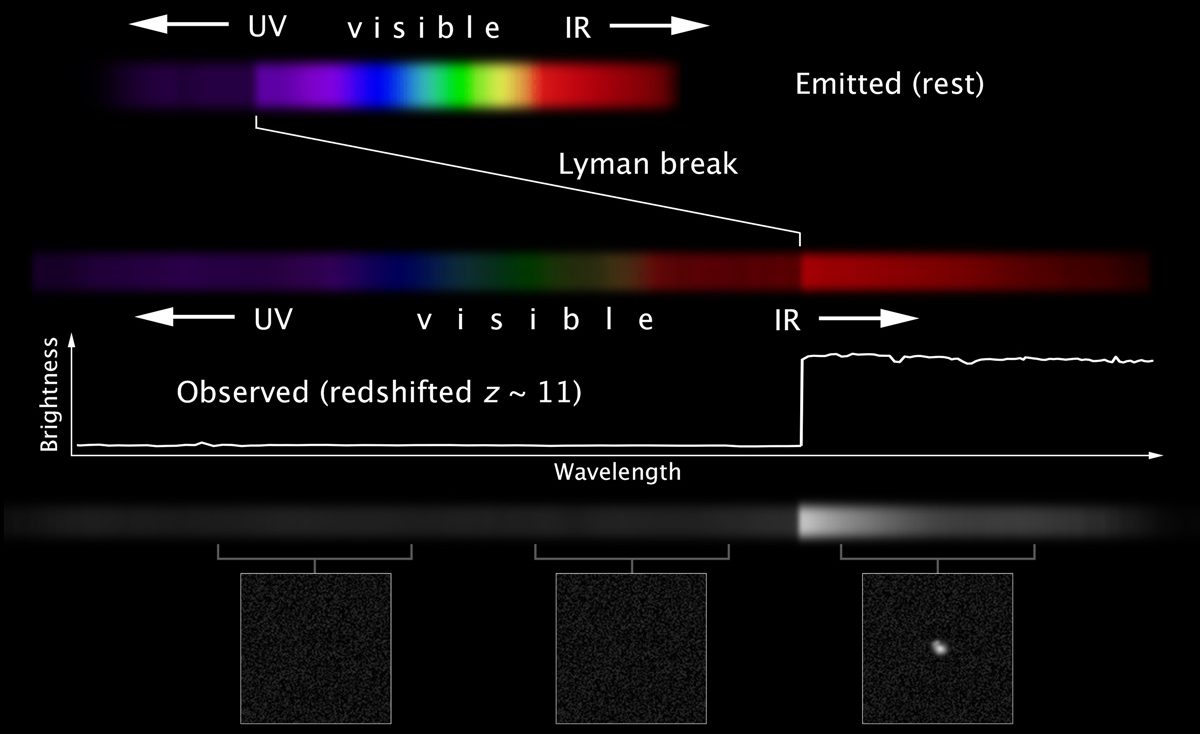Hubble Space Telescope shatters the cosmic distance record
 Named GN-z11, this bright and infant galaxy is seen as it was 13.4 billion years in the past or just 400 million years after the Big Bang, when the universe was only three percent of its current age.
Named GN-z11, this bright and infant galaxy is seen as it was 13.4 billion years in the past or just 400 million years after the Big Bang, when the universe was only three percent of its current age.
An international team of astronomers pushed the Hubble Space Telescope to its limits and broke the previous cosmic distance record (z=8.68), as GN-z11 redshift was spectroscopically confirmed to a value of z=11.1! It existed only 200 million to 300 million years after the time when scientists believe the very first stars started to form. At a billion solar masses, it is producing stars surprisingly quickly for such an early time.
The combination of Hubble’s and Spitzer’s imaging reveals that GN-z11 is 25 times smaller than the Milky Way and has just one percent of our galaxy’s mass in stars. However, the newborn GN-z11 is growing fast, forming stars at a rate about 20 times greater than our galaxy does today. This makes such an extremely remote galaxy bright enough for astronomers to find and perform detailed observations with both Hubble and Spitzer.
Pieter van Dokkum of Yale University, one of the scientists on this discovery noted: “This is an extraordinary accomplishment for Hubble. It managed to beat all the previous distance records held for years by much larger ground-based telescopes. This new record will likely stand until the launch of the James Webb Space Telescope.”
Links for more details:
- Hubble Space Telescope News Release: http://hubblesite.org/newscenter/archive/releases/2016/07/
- Scientific paper: http://arxiv.org/pdf/1603.00461v1.pdf
- Video to zooms into the GOODS North & GN-z11: http://hubblesite.org/newscenter/archive/releases/2016/07/video/a/
[ngg src=”galleries” ids=”8″ display=”basic_imagebrowser”]

